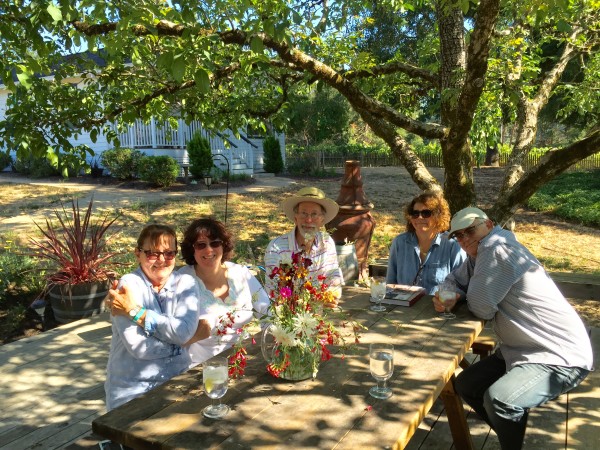
Wines, like people, age at different rates. Some elderly people are young at heart, vibrant, full of life, and still in their prime, while others are creaking curmudgeons, dried out husks of the persons they had once been.
Likewise, some old wines are vibrant and youthful, while others leave a sour taste in your mouth.
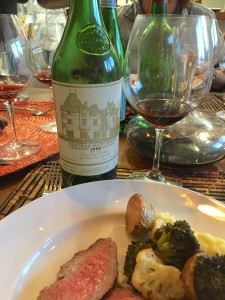 In the fall of 1983 I tasted the 1982 Château Haut Brion out of the barrel. Haut Brion, a first growth from Graves, has always been among my favorite Bordeaux, and the 1982 was an excellent vintage. I acquired a bottle upon release and stuck it in my cellar, where it rested for decades at an even 62 degrees Fahrenheit.
In the fall of 1983 I tasted the 1982 Château Haut Brion out of the barrel. Haut Brion, a first growth from Graves, has always been among my favorite Bordeaux, and the 1982 was an excellent vintage. I acquired a bottle upon release and stuck it in my cellar, where it rested for decades at an even 62 degrees Fahrenheit.
Collecting wine is a fun hobby, made more pleasant by the anticipation of that day in the future when that bottle will be opened to share with friends over a great meal. The opportunity to open the Haut Brion came in July, 2015, when we were invited to dinner at the Gantz Family Vineyards (https://www.facebook.com/GantzFamilyVineyards), by our friends Clay and Celeste Gantz, former neighbors and current winegrowers in the Russian River Valley. We were joined by Celeste’s brother (and my neighbor), Emmy award-winning composer, Christopher Hedge and his wife Sharon.
To round out the tasting and provide for an interesting comparison, I also planned to bring along a 1982 Château Lynch Bages, a fifth growth Pauillac that I’ve found often outshines its more illustrious neighbors.
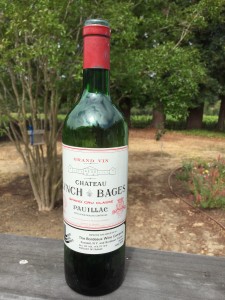 However, I’ve opened enough old bottles to expect surprises, both positive and negative. You really never know from one bottle to the next how a particular wine will age, even two wines from the same case. At thirty-two and a half years-old, it was a coin toss as to whether they would turn out to be magnificent or over-the-hill. So I decided to bring a couple of alternatives. The first was a 1982 Groth from Napa Valley, my favorite California Cabernet Sauvignon of that vintage at the time of its release, and an interesting comparison to the Bordeaux of the same vintage, as 1982 was also a very good year in California. The second, ten years younger, was a 1992 Jordan, Alexander Valley Cabernet Sauvignon.
However, I’ve opened enough old bottles to expect surprises, both positive and negative. You really never know from one bottle to the next how a particular wine will age, even two wines from the same case. At thirty-two and a half years-old, it was a coin toss as to whether they would turn out to be magnificent or over-the-hill. So I decided to bring a couple of alternatives. The first was a 1982 Groth from Napa Valley, my favorite California Cabernet Sauvignon of that vintage at the time of its release, and an interesting comparison to the Bordeaux of the same vintage, as 1982 was also a very good year in California. The second, ten years younger, was a 1992 Jordan, Alexander Valley Cabernet Sauvignon.
As usual, there was no relation of price to value. Being a first growth, the Haut Brion would have demanded top dollar at the time of its release, but this was in the days before Asian demand drove prices up to astronomical levels. On today’s market the 1982 would garner an average price of $900 a 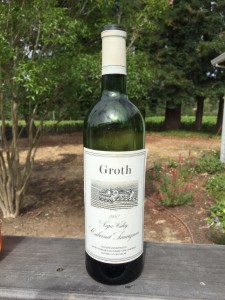 bottle, the Lynch Bages perhaps $300, the Groth about $150, and the Jordan about $70. But money is beside the point when you taste old wines. It’s all about the experience.
bottle, the Lynch Bages perhaps $300, the Groth about $150, and the Jordan about $70. But money is beside the point when you taste old wines. It’s all about the experience.
As so often happens when opening older wines, the results played against expectations. Both Bordeaux were disappointing. The Haut Brion was thin, it’s fruit had dried out, and all it had left were notes of leather, mushroom and coffee. The Lynch Bages had more body, a subdued bouquet of soy and tea, with a modicum of fruit and spice on the palate, but nothing I’d care to ponder over.
So I was glad to have other bottles to fall back on. I opened the Groth with some trepidation, for it was just as old. Yet it turned out I’d awakened an infant, a wine that could easily live another decade or two. In fact, this is the youngest tasting old wine I’ve ever had. It showed explosive aromatics, exuberant fruit on the palate, vibrant acidity, and velvety smooth texture, all with just 13% alcohol. If the Groth was the extroverted child, the Jordan was the introverted young adult, self-contained and linear. Though a decade 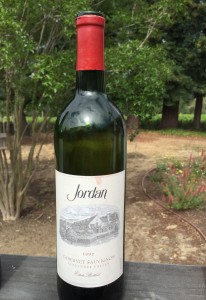 younger, it showed some aged character, including mushroom/truffle notes that blew off with some airing, as well as coffee notes, along with some youthful fruit and subtle spice. But where the Groth was fairly boisterous and bouncing off the walls, the Jordan was more reserved and mannered, with the same restrained intensity from the nose through the finish. Which of these you’d prefer would probably depend on your mood at the time. For me, the Groth paired perfectly with the steak and béarnaise sauce, but the Jordan was the wine I wanted to quietly linger over as the meal concluded.
younger, it showed some aged character, including mushroom/truffle notes that blew off with some airing, as well as coffee notes, along with some youthful fruit and subtle spice. But where the Groth was fairly boisterous and bouncing off the walls, the Jordan was more reserved and mannered, with the same restrained intensity from the nose through the finish. Which of these you’d prefer would probably depend on your mood at the time. For me, the Groth paired perfectly with the steak and béarnaise sauce, but the Jordan was the wine I wanted to quietly linger over as the meal concluded.
For dessert I brought along a magnum of 1996 Villa Poggio Salvi Aurico, Muscadello di Montalcino, a vin santo dessert wine given to me by Jacopo Biondi-Santi (made at his father-in-law’s winery). It was full of honey and toasted nut flavors, rich and sweet, a fine accompaniment to biscotti and strawberries.
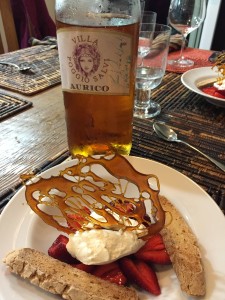 I’ve tasted a lot of old Bordeaux and old California Cabs, but I’ve rarely tasted them together, and never before from equal vintages. As California wines came into their own in the 1970s and ’80s and began giving Bordeaux a run for its money, the Bordeaux contingent argued that California wines might show well when young, but would never last. Time has proven them wrong, though few people today stay anyplace long enough to amass a cellar full of old wine.
I’ve tasted a lot of old Bordeaux and old California Cabs, but I’ve rarely tasted them together, and never before from equal vintages. As California wines came into their own in the 1970s and ’80s and began giving Bordeaux a run for its money, the Bordeaux contingent argued that California wines might show well when young, but would never last. Time has proven them wrong, though few people today stay anyplace long enough to amass a cellar full of old wine.
A couple days after this tasting we opened a bottle of 1992 Chappellet Napa Valley Cabernet Sauvignon, which showed similarly to the Jordan of the same age, just about at its peak at almost 23-years-old. It had an edge of mushroom/soy, with a core of red fruits (red currants, strawberries, cherries), fully resolved tannins, and light spice through the finish.
If you enjoy reading about older wines, and wine in general, you should really check out Charles Scicolone on Wine: https://charlesscicolone.wordpress.com. Charles is perhaps the foremost authority on Italian wine in the U.S., and his adventures in wine (and food) constantly remind me of what I find so appealing in this multidisciplinary subject.
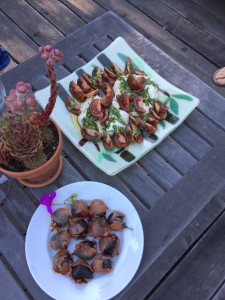
Figs wrapped in prosciutto, burrata with heirloom tomatoes, basil and olive oil.
